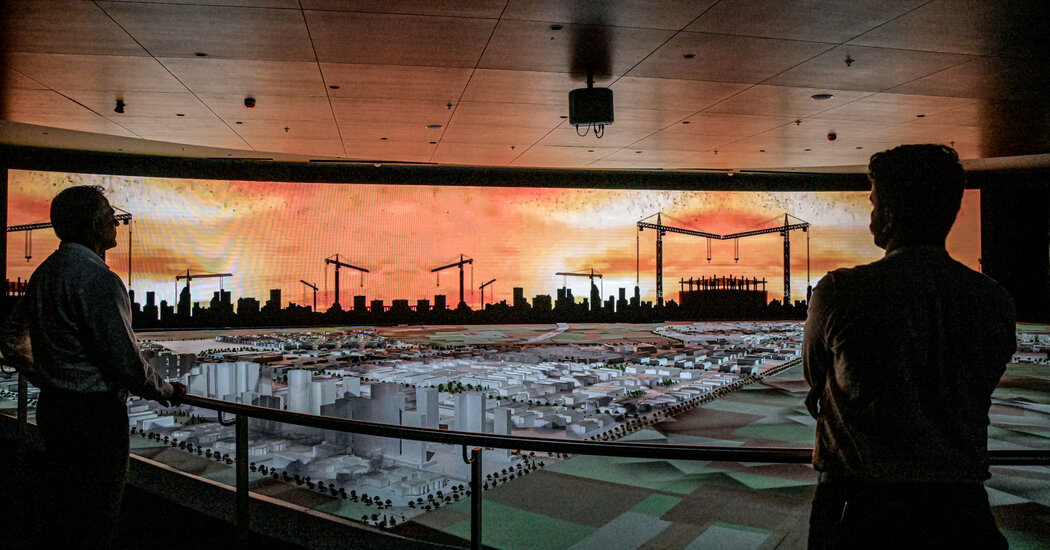India’s Moon Landing Offers Blueprint For Other Countries Dreaming Big
Even during the difficult decades when India was struggling to muster resources and find a path out of poverty, its scientists were aiming high in a characteristic style: frugally and often with little fanfare.
Some of their breakthroughs, such as the nuclear tests that began in the mid-1970s, brought sanctions and restrictions on knowledge sharing that forced the scientists to become self-reliant for leaps forward. Others, such as India’s repeated success in space exploration, were followed by nagging questions of priorities: Should a nation unable to meet the basic needs of much of its vast population be focusing on the skies?
But now, as the South Asian giant gradually comes into its own as an economic and geopolitical power, its deeply rooted tradition of scientific and technological excellence is showing itself to be a pillar of its rise and offering a blueprint to nations with similar aspirations.
The country’s groundbreaking landing on Wednesday of a rover on the southern polar region of the moon was done with a space budget that was smaller than many other countries’ and a tiny fraction of NASA’s. It did not just send a burst of joy and pride through the Indian public but also delivered a potent message: Resource constraints need not cut off the path to momentous achievement.
“India is repeatedly proving that the sky is not the limit,” Prime Minister Narendra Modi, who has made himself the face of an ascendant India, said to scientists at the control center immediately after the landing. “Science and technology are the foundation of a bright future for our nation.”
The rover landing made India only the fourth country to land on the moon successfully and the first to do so on its southern pole. Its success in space, just days after a similar Russian effort ended in a crash, is among a number of recent distinctions that have elevated India on the global stage.
The country has overtaken its former colonial overlord, Britain, to become the world’s fifth-largest economy. India’s diplomatic power has reached new heights as the West seeks a counterbalance to China’s influence. And the sense that this may be India’s moment has been underscored by its new status as the world’s most populous nation, with a young and expanding population primed to propel economic growth.
Projecting an image of an ambitious and confident India has been a focus of Mr. Modi’s time in office, particularly now, during his second term.
While his predecessor, the soft-spoken economist Manmohan Singh, went quietly about tackling the structural flaws holding back India’s economy, Mr. Modi is a skilled and forceful communicator and salesman.
Portraying himself as the son of a tea seller, he often draws on his own humble beginnings as proof of what India can accomplish, dismissing what the outside world sometimes sees as a disparity between India’s lofty dreams and the conditions in which a large section of its population still lives.
The effort to position India as an indispensable power is important to Mr. Modi as he seeks to extend his decade in office in an election early next year. But it also faces a host of complications.
India’s economic growth, while among the strongest globally, remains deeply unequal and insufficient for the needs of its population of 1.4 billion, with underemployment a serious challenge.
That growth, made even more urgent with an aggressive China at its gates, is in part dependent on the high-wire act of India’s nonaligned, transactional approach to global diplomacy. It must balance its increasing closeness to the United States and its deep ties to Russia while continuing its heavy flow of trade with China.
At home, Mr. Modi has built his electoral juggernaut on a deeply divisive brand of politics, destabilizing the secular foundation of an extremely diverse country. Mr. Modi’s governing party has aggressively cast India as a Hindu-first nation. The persecution and alienation of minorities, particularly the country’s 200 million Muslims, has created an environment of near-perpetual flare-ups of violence and tensions that are counterproductive to growth.
But, as Wednesday’s lunar landing showed, India has also found ways to overcome its fiercely fractious politics. The excitement in India surrounding its arrival on the global stage stems from a recognition that the country, long drawing on shoestring ways and ingenuity to overcome difficult odds, is finally getting the resources and international connections that could help it meet its potential.
“What is it that we are looking for? We are looking to transform this country, move it to a developed state — with help from people that would allow us to leapfrog several stages. Everywhere, we were reinventing the wheel,” said Indrani Bagchi, the chief executive of the Ananta Aspen Center, a nongovernmental organization in New Delhi. “The ducks are in a row now.”
Ms. Bagchi said India had a long history of scientific pursuit that had played a central role in helping it regain its belief in itself, not just after centuries of colonial subjugation, but also in the face of more contemporary efforts to hold it down.
Decades of U.S. sanctions after India launched its nuclear tests in 1974 became a major hurdle to growth, offset only by help from Moscow. Those decades deeply ingrained faith in Indians of their homegrown scientific and technological capabilities and rooted an obsessive pursuit of scientific progress despite a resource crunch that was “a constant strain in Indian strategic thinking,” Ms. Bagchi said.
“We only had ourselves to depend on,” she said. “It became a source of pride. Every time we reached something, every time we even had a minor achievement in science or technology, it was a moment of pride.”
The Indian Space Research Organization, popularly known as ISRO, has been a product of those times, and a constant source of that pride.
Its beginnings in the 1960s were so humble that parts of one of its early rockets were transported on the back of a bicycle, an image that has become lore. After many of its first rockets crashed into the sea, India’s young scientists went back to the drawing board.
Resources have increased in recent years, and India’s opening up of its space sector for private investment is seen as a new era. But ISRO still operates on an annual budget of only about $1.5 billion. NASA’s budget, for a much larger space program, is nearly $25 billion. India’s is so cost-effective that its spending of about $75 million on a Mars orbiter was less than the $100 million budget of the Hollywood space film “Gravity,” as Mr. Modi proudly has said.
What draws broad support for ISRO’s missions — with Wednesday’s landing welcomed with prayers, music and special screenings in schools across the country — is a culture of humility, teamwork and efficiency. Analysts said that a key to ISRO’s success had been freeing itself more than other institutions from bureaucratic constraints and bloated staffing that comes with state funding.
India has a number of large and famed state-funded technology institutes, whose graduates dominate Silicon Valley. But many of the leaders of the lunar mission are graduates of smaller, more modest engineering schools. The leaders, in their humble tucked-in shirts and plain saris, and the hundreds of scientists clapping for them at the moment of touchdown made for an image that middle-class India could easily relate to.
That India’s space program is based in Bengaluru, the city in the country’s south that is also known as Bangalore, plays a role in its success. India’s growth has been unequal, and the southern states are much better positioned on all the basic development indicators. With the basics largely met, the environment is more conducive to the pursuit of scientific excellence.
After the successful landing, Indian television channels broadcast emotional images from inside the simple home of P. Veeramuthuvel, the project director. His father, P. Palanivel, a former railway employee, sat in front of his television set wiping tears of joy before visitors came with sweets.
“For a middle-class Indian, the only way to leapfrog generations of poverty is by working hard to put your child through school and college,” Ms. Bagchi, of the Ananta Aspen Center, said, “and mostly in the sciences and technology.”
“In a microcosm,” she said, “that is the kind of leapfrogging, that is the kind of transformation we are looking for on a national scale.”
Hari Kumar contributed reporting from Bengaluru.


